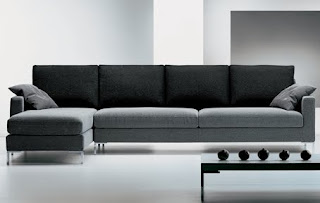Sunday, June 6, 2010
SOFA GUIDE: HOW TO FIND YOUR LIVING ROOM'S MR. RIGHT! - OAKVILLE HOMES
Buying a new sofa—one of the largest and most-used pieces of furniture in your home, the scene of much reading, TV-watching, snoozing and everything else-ing—is not a task to take on lightly.
You want comfort, style, durability, fabric that will withstand a spill and colour that’ll hide pet hair. And you don’t want to pay too much. But what’s too much?
Prices can vary wildly depending on the store and the manufacturer. Some of those differences are cosmetic, but most of what separates the high-end from the low-end is under the hood.
Pricier sofas generally have goose-down cushions for ultimate softness and are made with the most durable materials, including kiln-dried hardwood to prevent warping, doweled joints for maximum stability, and eight-way hand-tied springs to prevent sagging. At high-end stores, you’re also paying for the design quality, the knowledge of the sales staff and the ability to customize just about anything.
Ultimately, said Peter Howlett, director of operations at high-end furniture maker George Smith, where sofas run between $10,000 and $20,000, you’re paying for longevity.
“It’s going to last four generations because of the materials we use and the way it’s crafted,” said Howlett.
That’s not a knock on cheaper sofas, Howlett said: “All of them have a relevance in their market.”
Five keys to smart sofa shopping
No matter your budget, a sofa is a big investment. Here are five tips for shopping wisely, courtesy of furniture maker Mitchell Gold.
1. Measure. There’s nothing worse than buying a dream sofa you can’t get into your home. Go shopping armed with precise measurements of your stairwell, elevator, doors, hallways, garden gates and any other space your new sofa might have to squeeze through.
2. Try it out. While in the store, sink into the sofa the way you would at home. So lie down and put your feet up if that’s how you plan to use it, and test its comfort. Make sure the armrests are well-padded: you don’t want to feel wood poking through.
3. Check the construction. The sturdiest sofa frame will be made of kiln-dried hardwood like maple, poplar, beech or oak, or engineered hardwood. Avoid air-dried wood or soft woods, like pine. Joints secured with corner blocking, dowels and screws will last longer than just glue and staples, and it’s best to have a ticking between the foam cushion and fabric cover. Check stitches to make sure they’re even and not bunched.
4. Consider the cushions. The softest, most luxurious cushions are filled with goose down, but they take a lot of regular fluffing to keep their shape. Less expensive cushions made of high-resiliency foam compress during use and then spring back to shape. A happy medium: An inner foam core wrapped with a down cover.
5. Notice design details. Check out the sofa’s arms: A roll arm is more traditional, while a square or straight arm looks more modern. If you want the freedom to put the sofa in the middle of the room rather than against a wall, make sure the back is presentable.
Subscribe to:
Post Comments (Atom)





No comments:
Post a Comment